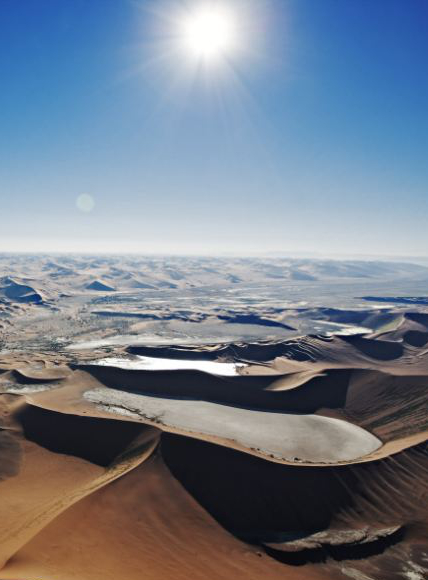UN says records to be set
 The UN says it is very likely that 2017 will be one of the three hottest years on record.
The UN says it is very likely that 2017 will be one of the three hottest years on record.
The World Meteorological Organization’s provisional Statement on the State of the Climate says this year has seen many high-impact events including catastrophic hurricanes and floods, debilitating heatwaves and drought.
Long-term indicators of climate change such as increasing carbon dioxide concentrations, sea level rise and ocean acidification continue unabated.
Arctic sea ice coverage remains below average and previously stable Antarctic sea ice extent was at or near a record low.
The WMO statement – which covers January to September - was released on the opening day of the United Nations climate change conference in Bonn.
It includes information submitted by a wide range of UN agencies on human, socio-economic and environmental impacts as part of a drive to provide a more comprehensive, UN-wide policy brief for decision makers on the interplay between weather, climate and water and the UN global goals.
Each of the last three years have hit high marks on global temperature records.
“This is part of a long term warming trend,” said WMO Secretary-General Petteri Taalas.
“We have witnessed extraordinary weather, including temperatures topping 50 degrees Celsius in Asia, record-breaking hurricanes in rapid succession in the Caribbean and Atlantic reaching as far as Ireland, devastating monsoon flooding affecting many millions of people and a relentless drought in East Africa.
“Many of these events – and detailed scientific studies will determine exactly how many – bear the tell-tale sign of climate change caused by increased greenhouse gas concentrations from human activities,” he said.
Experts say the trends cannot be ignored.
“It is most significant that temperatures haven’t returned to pre-El Niño yet, 1.5 years after it ended,” said CSIRO research scientist Pep Canadell.
“Although we don’t know all the details as to why, the human interference of the climate system has never been so clearly manifested as the background global temperature continues to rise in response to greenhouse gas emissions.”
Dr Ashraf Dewan from Curtin University, who recently spent two years as a member of the World Meteorological Organization’s Commission for Climatology (CCI) on Mortality Extremes, says the WMO report should be a loud warning.
“It is quite clear that Australia and the rest of the world has been suffering from climate extremes, and that we are seeing flooding, extreme temperatures and wild weather more frequently than ever before, and in places never before impacted,” Dr Dewan said.
“For example Canberra experienced the lowest temperature in 46 years when it recorded minus 8.7 in July this year.
“The City of Shanghai witnessed a record 40.9℃ temperature during summer of 2017.
“During monsoon season this year, India experienced below average rainfall, while three hurricanes hit the North Atlantic.
“This new data by WMO is a wakeup call for us as extreme events are increasing exposure of countries and people to a multitude of hazards.”
Dr Andrew King, Climate Extremes Research Fellow at the ARC Centre of Excellence for Climate System Science, says the oceans are feeling the heat too.
“Many animals, including humans, have the capacity to modify their behaviour and seek refuge in the face of environmental stress,” he said.
“For organisms attached to the seafloor, such as marine macroalgae, there is no escape.
“The recent WMO update of hotter temperatures therefore spells bad news for these marine primary producers that are known to have upper limits of temperature tolerance.
“Just as the highly exposed or sensitive members of the human population are at risk of overheating, so are macroalgae and seagrasses.
“In fact, marine heatwaves experienced in Australia have already caused massive dieback of these important marine primary producers, threatening the socioeconomic benefits provided by coastal ecosystems.
“The increased risk of further heat waves as well as exposure to warmer temperatures over the longer term, suggest that recovery will depend on thermally-resistant individuals that may trade-off high temperature tolerance with other important attributes such as nutritional value or rapid growth.
“Such organisms therefore have the potential of surviving a warming climate, but at the cost of their functional capacity, with cascading impacts to the rest of the ecosystem.”








 Print
Print